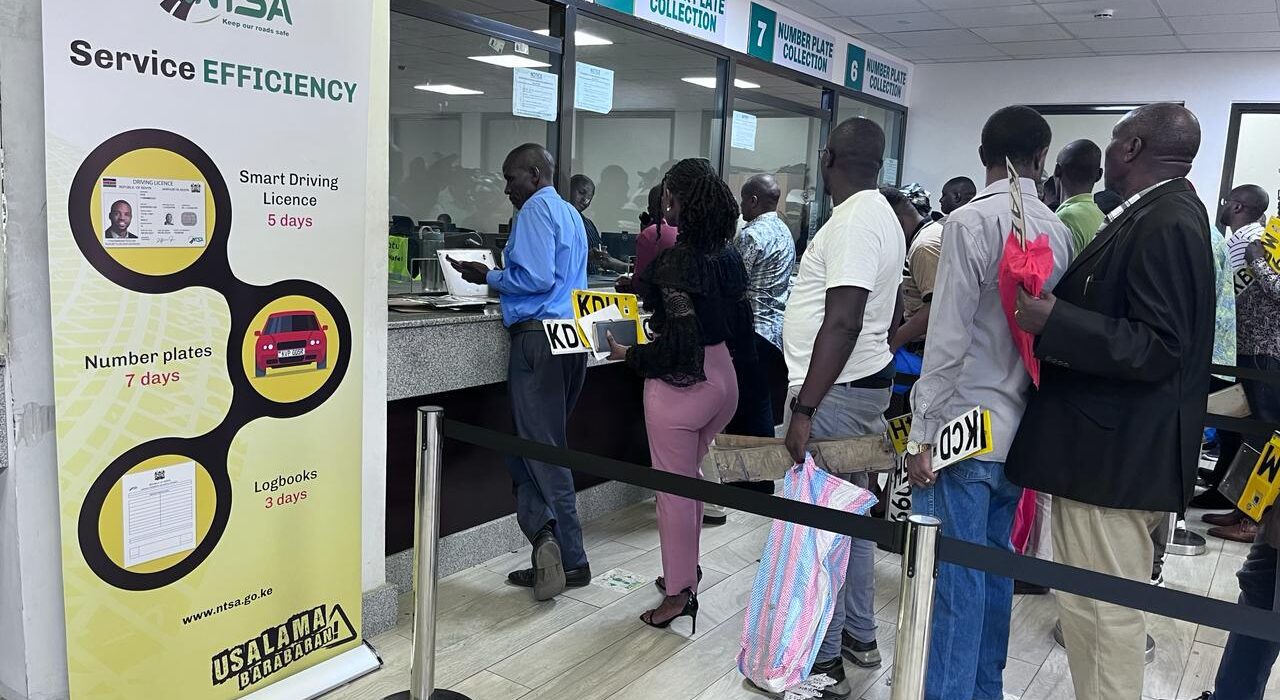In Kenya, the process of re-registering ex-diplomat vehicles to parastatal or government entities is a critical procedure governed by the National Transport and Safety Authority (NTSA). This process ensures that vehicles previously owned by diplomatic organizations are legally transferred and compliant with Kenyan regulations when acquired by government institutions or parastatals. With the increasing integration of services on the NTSA TIMS (Transport Information Management System) portal and the e-Citizen platform, understanding the requirements and steps for re-registration is essential for seamless compliance. This comprehensive guide outlines the entire process, requirements, and practical tips to successfully re-register ex-diplomat vehicles in 2025, tailored to the Kenyan context.
Why Re-Register Ex-Diplomat Vehicles?
Ex-diplomat vehicles, often imported under tax-exempt diplomatic privileges, require re-registration when transferred to non-diplomatic entities like parastatals or government bodies. This process ensures that the vehicle complies with Kenyan tax laws, road safety standards, and NTSA regulations. Re-registration also updates ownership details, assigns new registration plates, and ensures the vehicle is legally recognized under its new ownership.
The process can be complex due to the involvement of multiple government agencies, including the NTSA, the National Treasury, the Kenya Revenue Authority (KRA), and the Directorate of Criminal Investigations (DCI). However, with the right documentation and adherence to NTSA guidelines, parastatals and government entities can navigate this process efficiently.
Key Requirements for Re-Registration
To re-register an ex-diplomat vehicle to a parastatal or government entity on the NTSA portal, specific documents and steps are mandatory. Below is a detailed breakdown of the requirements, as outlined by the NTSA:
- Release Letter from the Diplomatic Organization: A formal letter from the diplomatic entity (e.g., embassy or international organization) confirming that the vehicle is no longer under diplomatic use and is released for transfer.
- Acceptance Letter and Request for Re-Registration: A letter from the parastatal or government entity requesting re-registration and confirming acceptance of the vehicle into their fleet.
- Tape Lift of Chassis and Engine Numbers: Obtained from the DCI, this verifies the vehicle’s identity and ensures it matches the details in the logbook.
- Original Logbook: The vehicle’s original logbook, issued under the diplomatic organization’s name, must be submitted.
- Entry and Payment Receipt or Exemption from the National Treasury: Proof of customs entry and payment of applicable duties or an exemption certificate issued by the National Treasury for tax-free transfers.
- Certificate of Incorporation of the Seller: If the vehicle is sold by a diplomatic entity registered as a legal entity, their certificate of incorporation is required.
- KRA PIN of the Buyer: The Kenya Revenue Authority Personal Identification Number (PIN) of the parastatal or government entity acquiring the vehicle.
- Surrender of Diplomatic Plates: The diplomatic registration plates must be surrendered at an NTSA-designated collection point.
These requirements ensure that the vehicle’s transfer is transparent, compliant with tax regulations, and properly documented on the NTSA portal.
Step-by-Step Guide to Re-Registering Ex-Diplomat Vehicles
The re-registration process involves several steps, from gathering documentation to completing the transfer on the NTSA TIMS portal. Below is a detailed guide to help parastatals and government entities navigate this process.
Step 1: Gather Required Documentation
Before initiating the re-registration process, ensure all required documents are prepared and verified. Missing or incomplete documents can delay the process or lead to rejection by the NTSA. Here’s a checklist to guide you:
- Verify the Release Letter: Ensure the diplomatic organization provides a signed and stamped release letter. This document must clearly state the vehicle’s details, including make, model, chassis number, and engine number.
- Obtain the Acceptance Letter: The parastatal or government entity must draft a formal letter requesting re-registration and confirming their intent to incorporate the vehicle into their fleet.
- Secure DCI Tape Lift: Visit a DCI office to obtain a tape lift of the vehicle’s chassis and engine numbers. This step confirms the vehicle’s authenticity and prevents fraud.
- Confirm Logbook Details: Ensure the original logbook is available and matches the vehicle’s physical details.
- National Treasury Documentation: Obtain either a payment receipt for customs duties or an exemption certificate from the National Treasury. This is critical for tax compliance.
- Certificate of Incorporation: If applicable, the seller (diplomatic entity) must provide their certificate of incorporation.
- KRA PIN: The buyer’s KRA PIN must be active and linked to the parastatal or government entity.
- Prepare Plates for Surrender: Diplomatic plates must be surrendered at an NTSA collection point, typically at an NTSA office or designated center.
Step 2: Access the NTSA TIMS Portal
The NTSA TIMS portal, integrated with the e-Citizen platform, is the primary platform for vehicle-related transactions in Kenya. To begin the re-registration process:
- Log into the e-Citizen Platform: Visit e-Citizen and log in using the parastatal or government entity’s credentials. If the entity is not registered, create an account using the organization’s KRA PIN.
- Navigate to NTSA Services: Select the NTSA services section and choose “Vehicle Registration” followed by “Transfer of Ownership.”
- Select Re-Registration Option: Specify that the transfer involves an ex-diplomat vehicle to a parastatal or government entity.
Step 3: Upload Required Documents
The NTSA TIMS portal requires digital copies of all documents. Ensure the following are scanned clearly and uploaded:
- Release letter from the diplomatic organization.
- Acceptance letter from the parastatal or government entity.
- DCI tape lift of chassis and engine numbers.
- Original logbook (front and back).
- National Treasury payment receipt or exemption certificate.
- Certificate of incorporation of the seller (if applicable).
- KRA PIN certificate of the buyer.
Ensure all files are in PDF format and meet the portal’s size and format requirements. Incomplete or unclear uploads may result in rejection.
Step 4: Pay Applicable Fees
Re-registering an ex-diplomat vehicle may involve fees, depending on whether the National Treasury has granted an exemption. Fees are paid through the e-Citizen platform using mobile money (e.g., M-Pesa) or bank cards. Common fees include:
- Transfer Fee: Approximately KSh 2,000–3,000, depending on the vehicle type.
- Registration Plate Fee: If new plates are issued, expect to pay around KSh 1,500–2,000 for standard government plates.
Always confirm the exact fees on the NTSA portal, as they may vary based on vehicle category or updates to NTSA policies.
Step 5: Surrender Diplomatic Plates
Diplomatic plates must be surrendered at an NTSA-designated collection point. Common locations include:
- NTSA headquarters in Nairobi.
- Regional NTSA offices in Mombasa, Kisumu, Nakuru, or Eldoret.
- Authorized vehicle inspection centers.
Upon surrender, you’ll receive a confirmation receipt, which may need to be uploaded to the TIMS portal to finalize the re-registration.
Step 6: Await NTSA Approval
Once all documents are uploaded and fees paid, the NTSA reviews the application. This process typically takes 3–7 working days, though delays may occur if documents are incomplete. You can track the application status on the TIMS portal using the reference number provided during submission.
Step 7: Collect New Logbook and Plates
Upon approval, the NTSA issues a new logbook reflecting the parastatal or government entity as the owner. New government plates (typically starting with “GK” for government vehicles) are also issued. Collect these from the nearest NTSA office or have them delivered via courier, if available.
Challenges and Solutions in Re-Registration
While the process is straightforward on paper, several challenges may arise. Here are common issues and how to address them:
- Delays in DCI Tape Lift: DCI offices may have backlogs, especially in busy regions like Nairobi. Solution: Schedule an appointment in advance or visit less busy DCI offices in smaller towns.
- Portal Technical Issues: The NTSA TIMS portal, integrated with e-Citizen, has been reported to have glitches, such as pending applications blocking new ones. Solution: Contact NTSA customer service via their hotline (0709 932 300) or email (info@ntsa.go.ke) to resolve portal issues.
- Missing National Treasury Exemption: Some parastatals may face delays in obtaining exemption certificates. Solution: Liaise directly with the National Treasury’s customs department and ensure all paperwork is complete before applying.
- Revenue Losses and Data Risks: Recent reports highlight concerns about the NTSA losing control of TIMS after its integration with e-Citizen, risking data breaches. Solution: Ensure all sensitive documents are securely uploaded and monitor the portal for unauthorized changes.
Why Compliance Matters
Re-registering ex-diplomat vehicles ensures compliance with Kenyan laws, particularly tax and road safety regulations. Failure to follow the correct process can result in:
- Fines or penalties from the NTSA or KRA.
- Seizure of the vehicle for non-compliance.
- Delays in operationalizing the vehicle within the parastatal or government fleet.
Moreover, proper re-registration enhances transparency, reduces the risk of fraud, and ensures the vehicle is roadworthy and legally recognized.
Practical Tips for a Smooth Re-Registration Process
To streamline the re-registration process, consider the following tips:
- Double-Check Documents: Ensure all documents are complete, signed, and stamped before submission.
- Engage a Clearing Agent: For complex cases, a licensed clearing agent familiar with NTSA and customs processes can expedite the process.
- Monitor Application Status: Regularly check the TIMS portal for updates and respond promptly to any NTSA queries.
- Stay Updated on NTSA Policies: NTSA regulations may change, so visit the official NTSA website (www.ntsa.go.ke) or follow their X account for updates.
- Plan for Fees: Budget for transfer and plate fees to avoid delays during payment.
The Role of the NTSA TIMS Portal in 2025
The NTSA TIMS portal, fully integrated with e-Citizen in 2025, has transformed vehicle registration processes in Kenya. However, its efficiency depends on proper usage and timely updates. The portal’s integration aims to centralize services, reduce paperwork, and enhance transparency. Despite these advancements, posts on X highlight occasional challenges, such as system glitches or delays in processing. Parastatals and government entities should allocate sufficient time for the process and seek NTSA support when needed.
Re-registering ex-diplomat vehicles to parastatal or government entities on the NTSA portal is a structured but multi-step process that requires careful preparation and compliance with Kenyan regulations. By gathering the necessary documents—release letter, acceptance letter, DCI tape lift, original logbook, National Treasury exemption, certificate of incorporation, KRA PIN, and surrendered plates—entities can successfully transfer ownership. The NTSA TIMS portal streamlines the process, but challenges like portal glitches or delays in obtaining documents may arise. With proper planning and adherence to NTSA guidelines, parastatals and government bodies can ensure a smooth re-registration process, keeping their fleets compliant and operational.
For further assistance, contact the NTSA via their official channels or visit www.ntsa.go.ke for the latest updates on vehicle re-registration in Kenya.





